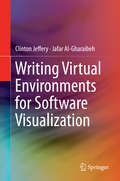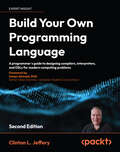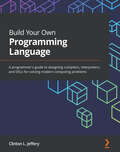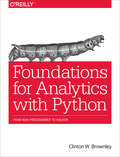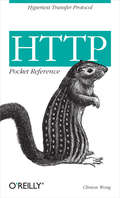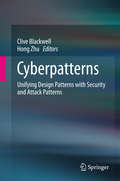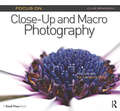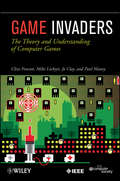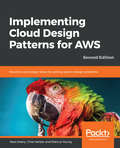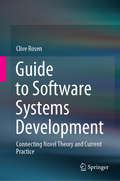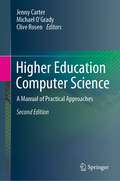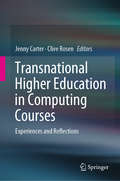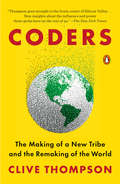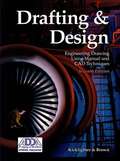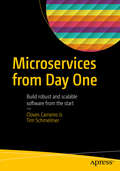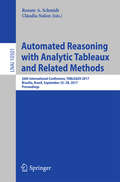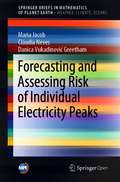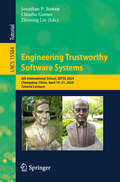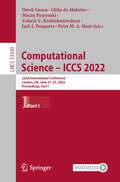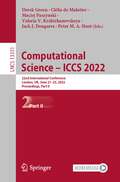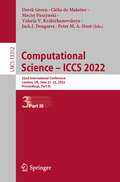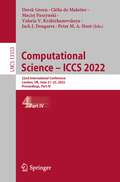- Table View
- List View
Writing Virtual Environments for Software Visualization
by Clinton Jeffery Jafar Al-GharaibehWriting Virtual Environments for Software Visualization book describes the software for a networked, 3D multi-user virtual environment that allows users to create and share remotely visualizations of program behavior. Collaborative virtual environments such as World of Warcraft or Second Life are a popular way to share interactive internet experiences, but they are complex and difficult to create Software visualization is an area that may enable important advances in our ability to understand and reduce the costs of maintaining software. Applying the former technology to this problem area will be valuable to distributed and multi-institutional software development and educational users. The author covers the major features of collaborative virtual environments and how to program them in a very high level language. The book also examines the application of popular game-like software technologies.
Build Your Own Programming Language: A programmer's guide to designing compilers, interpreters, and DSLs for modern computing problems
by Clinton L. JefferyLearn to design your own programming language in a hands-on way by building compilers, using preprocessors, transpilers, and more, in this fully-refreshed second edition, written by the creator of the Unicon programming language. Purchase of the print or Kindle book includes a free PDF eBookKey FeaturesTakes a hands-on approach; learn by building the Jzero language, a subset of Java, with example code shown in both the Java and Unicon languagesLearn how to create parsers, code generators, scanners, and interpretersTarget bytecode, native code, and preprocess or transpile code into a high-level languageBook DescriptionThere are many reasons to build a programming language: out of necessity, as a learning exercise, or just for fun. Whatever your reasons, this book gives you the tools to succeed. You’ll build the frontend of a compiler for your language and generate a lexical analyzer and parser using Lex and YACC tools. Then you’ll explore a series of syntax tree traversals before looking at code generation for a bytecode virtual machine or native code. In this edition, a new chapter has been added to assist you in comprehending the nuances and distinctions between preprocessors and transpilers. Code examples have been modernized, expanded, and rigorously tested, and all content has undergone thorough refreshing. You’ll learn to implement code generation techniques using practical examples, including the Unicon Preprocessor and transpiling Jzero code to Unicon. You'll move to domain-specific language features and learn to create them as built-in operators and functions. You’ll also cover garbage collection. Dr. Jeffery’s experiences building the Unicon language are used to add context to the concepts, and relevant examples are provided in both Unicon and Java so that you can follow along in your language of choice. By the end of this book, you'll be able to build and deploy your own domain-specific language.What you will learnAnalyze requirements for your language and design syntax and semantics.Write grammar rules for common expressions and control structures.Build a scanner to read source code and generate a parser to check syntax.Implement syntax-coloring for your code in IDEs like VS Code.Write tree traversals and insert information into the syntax tree.Implement a bytecode interpreter and run bytecode from your compiler.Write native code and run it after assembling and linking using system tools.Preprocess and transpile code into another high-level languageWho this book is forThis book is for software developers interested in the idea of inventing their own language or developing a domain-specific language. Computer science students taking compiler design or construction courses will also find this book highly useful as a practical guide to language implementation to supplement more theoretical textbooks. Intermediate or better proficiency in Java or C++ programming languages (or another high-level programming language) is assumed.
Build Your Own Programming Language: A programmer's guide to designing compilers, interpreters, and DSLs for solving modern computing problems
by Clinton L. JefferyWritten by the creator of the Unicon programming language, this book will show you how to implement programming languages to reduce the time and cost of creating applications for new or specialized areas of computingKey FeaturesReduce development time and solve pain points in your application domain by building a custom programming languageLearn how to create parsers, code generators, file readers, analyzers, and interpretersCreate an alternative to frameworks and libraries to solve domain-specific problemsBook DescriptionThe need for different types of computer languages is growing rapidly and developers prefer creating domain-specific languages for solving specific application domain problems. Building your own programming language has its advantages. It can be your antidote to the ever-increasing size and complexity of software.In this book, you'll start with implementing the frontend of a compiler for your language, including a lexical analyzer and parser. The book covers a series of traversals of syntax trees, culminating with code generation for a bytecode virtual machine. Moving ahead, you'll learn how domain-specific language features are often best represented by operators and functions that are built into the language, rather than library functions. We'll conclude with how to implement garbage collection, including reference counting and mark-and-sweep garbage collection. Throughout the book, Dr. Jeffery weaves in his experience of building the Unicon programming language to give better context to the concepts where relevant examples are provided in both Unicon and Java so that you can follow the code of your choice of either a very high-level language with advanced features, or a mainstream language.By the end of this book, you'll be able to build and deploy your own domain-specific languages, capable of compiling and running programs.What you will learnPerform requirements analysis for the new language and design language syntax and semanticsWrite lexical and context-free grammar rules for common expressions and control structuresDevelop a scanner that reads source code and generate a parser that checks syntaxBuild key data structures in a compiler and use your compiler to build a syntax-coloring code editorImplement a bytecode interpreter and run bytecode generated by your compilerWrite tree traversals that insert information into the syntax treeImplement garbage collection in your languageWho this book is forThis book is for software developers interested in the idea of inventing their own language or developing a domain-specific language. Computer science students taking compiler construction courses will also find this book highly useful as a practical guide to language implementation to supplement more theoretical textbooks. Intermediate-level knowledge and experience working with a high-level language such as Java or the C++ language are expected to help you get the most out of this book.
Foundations for Analytics with Python: From Non-Programmer to Hacker
by Clinton W. BrownleyIf you’re like many of Excel’s 750 million users, you want to do more with your data—like repeating similar analyses over hundreds of files, or combining data in many files for analysis at one time. This practical guide shows ambitious non-programmers how to automate and scale the processing and analysis of data in different formats—by using Python.After author Clinton Brownley takes you through Python basics, you’ll be able to write simple scripts for processing data in spreadsheets as well as databases. You’ll also learn how to use several Python modules for parsing files, grouping data, and producing statistics. No programming experience is necessary.Create and run your own Python scripts by learning basic syntaxUse Python’s csv module to read and parse CSV filesRead multiple Excel worksheets and workbooks with the xlrd modulePerform database operations in MySQL or with the mysqlclient moduleCreate Python applications to find specific records, group data, and parse text filesBuild statistical graphs and plots with matplotlib, pandas, ggplot, and seabornProduce summary statistics, and estimate regression and classification modelsSchedule your scripts to run automatically in both Windows and Mac environments
HTTP Pocket Reference: Hypertext Transfer Protocol
by Clinton WongThe HyperText Transfer Protocol, or HTTP, is the backbone of the World Wide Web. HTTP is the language that each web browser (or other web client) uses to communicate with servers around the world. All web programmers, administrators, and application developers need to be familiar with HTTP in order to work effectively.The HTTP Pocket Reference not only provides a solid conceptual foundation of HTTP, it also serves as a quick reference to each of the headers and status codes that comprise an HTTP transaction. The book starts with a tutorial of HTTP, but then explains the client request and server responses in more detail, and gives a thorough technical explanation of more advanced features of HTTP (such as persistent connections and caching).Most people use the Web every day without knowing anything about HTTP, but for those who need to get "beyond the browser," this book is the place to start.
Cyberpatterns: Unifying Design Patterns with Security and Attack Patterns
by Clive Blackwell Hong ZhuCyberspace in increasingly important to people in their everyday lives for purchasing goods on the Internet, to energy supply increasingly managed remotely using Internet protocols. Unfortunately, this dependence makes us susceptible to attacks from nation states, terrorists, criminals and hactivists. Therefore, we need a better understanding of cyberspace, for which patterns, which are predictable regularities, may help to detect, understand and respond to incidents better. The inspiration for the workshop came from the existing work on formalising design patterns applied to cybersecurity, but we also need to understand the many other types of patterns that arise in cyberspace.
The Insider Threat: Combatting the Enemy Within
by Clive BlackwellData Loss Prevention is easier and cheaper than cure - the insider threat poses a significant and increasing problem for organisations. The use of highly connected computers makes controlling information much more difficult than in the past. This new pocket guide intends to shed light on the key security issues facing organisations from insiders to get them up to speed quickly. It is written by Clive Blackwell who is a researcher at Royal Holloway, University of London, where his main field is security architecture. He has developed a practical three-layer security architecture to model computer networks such as the Internet and other complex systems such as critical infrastructure. He is currently applying the model to the insider threat within different business sectors, which has resulted in several academic papers. Clive is a regular speaker on security at both academic and business conferences in the US and Europe as well as the UK. He has recently been invited to give talks on the insider threat at two major business conferences. He has about 20 publications to his name within the last two years, so he is aware of the security issues facing business.
Focus On Close-Up and Macro Photography: Focus on the Fundamentals (The Focus On Series)
by Clive BransonWant to get the best out of your digital camera? Not quite sure how to capture up-close shots? Want easy to follow, expert advice on the best ways to creatively capture macro shots you can be proud of? This is your ticket to go beyond a snapshot to create a fine art print that you'll be so proud of. Macro and close-up photography involves a unique skill set in terms of exposure, lighting, and of course, composition in particular. You can take a quick photo of a sunflower in your back yard that will look mundane and typical OR you could learn how to take a picture of just a part of it-up close-and create a work of art. Let this book be your guide!
Conservation of Twentieth-Century Furniture (Routledge Series in Conservation and Museology)
by Clive Edwards Jake KanerConservation of Twentieth-Century Furniture provides comprehensive and accessible coverage of the materials and techniques that are encountered in furniture of this century.After putting the design, manufacture and conservation of twentieth-century furniture into context, the volume then offers an A-Z of materials organised into 12 chapters. Within each chapter a wide variety of material types are discussed, observed, analysed and contextualised, and a list of further sources is provided. The furniture discussed in this book ranges from designer craftsman, individually made pieces, to factory-produced batch items, and includes cabinet work, decoration, surface finishes and upholstery, observing the traditional repertoire of materials, as well as innovative materials and processes introduced over the course of this century. Following the material chapters, the book also includes brief case studies that illustrate some examples of twentieth-century furniture conservation, with a focus on metal, plastic and wood.Conservation of Twentieth-Century Furniture is the primary resource for those working on the manufacture, history and care of furniture of this period, including conservators, curators, dealers and collectors.
Game Invaders: The Theory and Understanding of Computer Games
by Clive Fencott Jo Clay Mike Lockyer Paul MasseyPresenting a holistic and thoroughly practical investigation of the true nature of computer games that arms readers with a small yet powerful set of theories for developing unique approaches to understanding games. Game Invaders fully integrates genre theory, new media aesthetics, perceptual opportunities, and semiotics into a practical DIY toolkit for games analysis—offering detailed guidance for how to conduct in-depth critiques of game content and gameplay. Featuring an informal and witty writing style, the book devotes a number of chapters to specific games from all eras, clearly demonstrating the practical application of the theories to modern, large-scale computer games. Readers will find: • Suggestions on how to apply the DIY package to major issues central to understanding computer games and their design • Coverage of the semiotics of video games, laying the foundation for such topics as the role of agency and virtual storytelling • Tasks and solutions for readers wishing to practice techniques introduced in the book • A companion website featuring access to an app that enables the reader to conduct their own activity profiling of games An important resource for those wishing to dig deeper into the games they design, Game Invaders gives game designers the skills they need to stand out from the crowd. It is also a valuable guide for anyone wishing to learn more about computer games, virtual reality, and new media.
Implementing Cloud Design Patterns for AWS: Solutions and design ideas for solving system design problems, 2nd Edition
by Marcus Young Clive Harber Sean KeeryCreate highly efficient design patterns for scalability, redundancy, and high availability in the AWS CloudKey FeaturesBuild highly robust systems using the cloud infrastructureMake web applications resilient against scheduled and accidental downtimeExplore and apply Amazon-provided services in unique ways to solve common design problemsBook DescriptionWhether you're just getting your feet wet in cloud infrastructure or already creating complex systems, this book will guide you through using the patterns to fit your system needs.Starting with patterns that cover basic processes such as source control and infrastructure-as-code, the book goes on to introduce cloud security practices. You'll then cover patterns of availability and scalability and get acquainted with the ephemeral nature of cloud environments. You'll also explore advanced DevOps patterns in operations and maintenance, before focusing on virtualization patterns such as containerization and serverless computing. In the final leg of your journey, this book will delve into data persistence and visualization patterns. You'll get to grips with architectures for processing static and dynamic data, as well as practices for managing streaming data.By the end of this book, you will be able to design applications that are tolerant of underlying hardware failures, resilient against an unexpected influx of data, and easy to manage and replicate.What you will learnImplement scaling policies on schedules, influxes in traffic, and deep health checksMake complete use of highly available and redundant storageDesign content delivery networks to improve user experienceOptimize databases through caching and shardingApply patterns to solve common problemsImplement repeatable processes for deploying systemsWho this book is forIf you’re an architect, solution provider, or DevOps community member looking to implement repeatable patterns for deploying and maintaining services in the Amazon cloud infrastructure, this book is for you.You’ll need prior experience of using AWS understand key concepts covered in the book, as it focuses on the patterns rather than the basics of using AWS.
Guide to Software Systems Development: Connecting Novel Theory and Current Practice
by Clive RosenThis book argues that the key problems of software systems development (SSD) are socio-technical rather than purely technical in nature. Software systems are unique. They are the only human artefacts that are both intangible and determinant. This presents unprecedented problems for the development process both in determining what is required and how it is developed. Primarily this is a problem of communications between stakeholders and developers, and of communications within the development team. Current solutions are not only inadequate in expressing the technical problem, they also evade the communications problems almost entirely.Whilst the book addresses the theoretical aspects of the process, its fundamental philosophy is anchored in the practical problems of everyday software development. It therefore offers both a better understanding of the problems of SSD and practical suggestions of how to deal with those problems. It is intended as a guide for practising IT project managers, particularly those who are relatively new to the position or do not have a strong IT development background. The book will also benefit students in computing and computer-related disciplines who need to know how to develop high quality systems.Software systems development (particularly of large projects) has a notoriously poor track record of delivering projects on time, on budget, and of meeting user needs. Proponents of software engineering suggest that this is because too few project managers actually comply with the disciplines demanded of the process. It is time to ask the question, if this is the case, why might this be? Perhaps instead, it is not the project managers who are wrong, but the definition of the process. The new understanding of the SSD presented here offers alternative models that can help project managers address the difficulties they face and better achieve the targets they are set. This book argues that time is up for the software engineering paradigm of SSD and that it should be replaced with a socio-technical paradigm based on open systems thinking.
Higher Education Computer Science: A Manual of Practical Approaches
by Jenny Carter Michael O’Grady Clive RosenThe march towards on-line and blended teaching—present before the Covid-19 pandemic—has been accelerated by it, and there is no going back. Students and staff may object, but the economic drive towards “greater productivity” will inevitably result in less face-to-face (f2f) instruction. Therefore, it is incumbent for those delivering this precious, in-person resource to make maximum use of time…which raises the question, “how”?The second edition of Higher Education Computer Science offers some potential answers. It also addresses other questions, such as “why have f2f teaching at all?” “what is the purpose of f2f?” and “what is the appropriate balance between the two?” The first edition began to offer suggestions for optimising limited opportunities to get together with students. Aligned with that, this unique new volume examines how to use the technology available to maximum advantage: For example, resources such as Moocs and other on-line instructional materials can provide invaluable pedagogic support. In addition, the book addresses ‘problem-based learning,’ using robotics in the teaching of programming, and a multidisciplinary approach to data science. Although it includes a chapter on distance learning, there is greater emphasis placed on the soft, transferable skills and employability skills that are best delivered in person. Further, the work provides several examples of putting theory into practice when teaching computer science at both undergraduate and postgraduate levels. Written by experienced practitioners, each chapter tackles a particular teaching activity or topic within computing, presented in such a way that other practitioners can use. As such, this new volume will be an invaluable resource to those who want to protect and optimise in-person teaching.
Transnational Higher Education in Computing Courses: Experiences and Reflections
by Jenny Carter Clive RosenThere has been exponential growth in transnational education (TNE) in the last few years as UK universities have looked to expand their markets. Recipient countries have sought short cuts to developing their higher education provision which has proved a lucrative income stream for some universities. But overseas collaborations are not without risk. Recipient countries can be concerned with external influence over curricula, quality being diluted and higher education being infected by neo-imperialism. These concerns are not without foundation. There are risks for providers too. Reputations can be damaged if academic standards are compromised. Conflicts of interest can occur between quality of provision and the pot of gold on offer. Staff can view overseas collaborations as distracting from their research and commitment to home students. Computing is a particularly popular subject for TNE, but critical thinking, analysis, independent learning, and creativity can be compromised. Preventing plagiarism is difficult. Constant changes in technology result in constant curricula revision which causes severe problems for overseas collaborations. This book focuses on TNE in the computing domain. However cross-cultural issues challenge TNE management and administration whatever the subject area. If the ever present tensions are not continuously monitored they can quickly threaten the sustainability of the collaboration. This book identifies many of the threats and some of the solutions. The readership for this book is truly global. Any international development officer in higher education considering an overseas collaboration will benefit from this book. Any academic becoming engaged in, or already involved with a TNE partnership, either as provider or recipient, will gain information and insight into the practice and issues. Researchers in TNE will discover more lines of enquiry. Students considering a course with an overseas provider or in coming to the UK to study will be better prepared thereby enabling a more fulfilling and rewarding experience. Anyone who has an interest in TNE, whether at the senior executive level, operational level, delivering programmes or as a recipient of TNE should read this book. The wealth of experience gathered here will provoke questions, prompt debate and offer solutions. It has been written by people who know the issues, bear the scars and are happy to share their knowledge. It will greatly benefit future transnational collaborations.
Coders: The Making of a New Tribe and the Remaking of the World
by Clive ThompsonHello, world.Facebook's algorithms shaping the news. Self-driving cars roaming the streets. Revolution on Twitter and romance on Tinder. We live in a world constructed of code--and coders are the ones who built it for us. From acclaimed tech writer Clive Thompson comes a brilliant anthropological reckoning with the most powerful tribe in the world today, computer programmers, in a book that interrogates who they are, how they think, what qualifies as greatness in their world, and what should give us pause. They are the most quietly influential people on the planet, and Coders shines a light on their culture.In pop culture and media, the people who create the code that rules our world are regularly portrayed in hackneyed, simplified terms, as ciphers in hoodies. Thompson goes far deeper, dramatizing the psychology of the invisible architects of the culture, exploring their passions and their values, as well as their messy history. In nuanced portraits, Coders takes us close to some of the great programmers of our time, including the creators of Facebook's News Feed, Instagram, Google's cutting-edge AI, and more. Speaking to everyone from revered "10X" elites to neophytes, back-end engineers and front-end designers, Thompson explores the distinctive psychology of this vocation--which combines a love of logic, an obsession with efficiency, the joy of puzzle-solving, and a superhuman tolerance for mind-bending frustration. Along the way, Coders thoughtfully ponders the morality and politics of code, including its implications for civic life and the economy. Programmers shape our everyday behavior: When they make something easy to do, we do more of it. When they make it hard or impossible, we do less of it. Thompson wrestles with the major controversies of our era, from the "disruption" fetish of Silicon Valley to the struggle for inclusion by marginalized groups.In his accessible, erudite style, Thompson unpacks the surprising history of the field, beginning with the first coders -- brilliant and pioneering women, who, despite crafting some of the earliest personal computers and programming languages, were later written out of history. Coders introduces modern crypto-hackers fighting for your privacy, AI engineers building eerie new forms of machine cognition, teenage girls losing sleep at 24/7 hackathons, and unemployed Kentucky coal-miners learning a new career. At the same time, the book deftly illustrates how programming has become a marvelous new art form--a source of delight and creativity, not merely danger. To get as close to his subject as possible, Thompson picks up the thread of his own long-abandoned coding skills as he reckons, in his signature, highly personal style, with what superb programming looks like. To understand the world today, we need to understand code and its consequences. With Coders, Thompson gives a definitive look into the heart of the machine.
Drafting & Design: Engineering Drawing Using Manual and CAD Techniques
by Clois E. Kicklighter Walter C. BrownNIMAC-sourced textbook
Drafting and Design: Engineering Drawing Using Manual and CAD Techniques
by Clois E. Kicklighter Walter C. BrownWritten to meet the educational needs of both beginning and advanced students, Drafting & Design features comprehensive instruction in both manual (traditional) drafting and computer-aided drafting (CAD). Step-by-step, detailed drafting procedures are presented throughout the text to illustrate the tools and techniques of both methods. For each drafting task presented, manual and CAD procedures are given in sequence to explain both approaches to drafting.
Microservices From Day One
by Cloves Carneiro Jr. Tim SchmelmerLearn what a microservices architecture is, its advantages, and why you should consider using one when starting a new application. The book describes how taking a microservices approach from the start helps avoid the complexity and expense of moving to a service-oriented approach after applications reach a critical code base size or traffic load. Microservices from Day One discusses many of the decisions you face when adopting a service-oriented approach and defines a set of rules to follow for easily adopting microservices. The book provides simple guidelines and tips for dividing a problem domain into services. It also describes best practices for documenting and generating APIs and client libraries, testing applications with service dependencies, optimizing services for client performance, and much more. Throughout the book, you will follow the development of a sample project to see how to apply the best practices described. What You Will Learn: Apply guidelines and best practices for developing projects that use microservices Define a practical microservices architecture at the beginning of a project that allows for fast development Define and build APIs based on real-world best practices Build services that easily scale by using tools available in most programming languages Test applications in a distributed environment Who This Book is For: Software engineers and web developers who have heard about microservices, and want to either move the project/applications they work on to a service-oriented environment, or want to start a new project knowing that building services helps with ease of scaling and maintainability. The book is a reference for developers who have a desire to build software in smaller, more focused and manageable chunks, but do not know how to get started.
Automated Reasoning with Analytic Tableaux and Related Methods: 26th International Conference, TABLEAUX 2017, Brasília, Brazil, September 25–28, 2017, Proceedings (Lecture Notes in Computer Science #10501)
by Renate A. Schmidt Cláudia NalonThis book contains the proceedings of the 26th International Conference on Automated Reasoning with Analytics Tableaux and Related Methods, TABLEAUX 2017, held in Bras#65533;lia, Bazil, in September 2017. The 19 contributed papers presented in this volume were carefully reviewed and selected from 27 submissions. They are organized in topical sections named: Sequent systems; tableaux; transitive closure and cyclic proofs; formalization and complexity. Also included are papers of three invited speakers.
Forecasting and Assessing Risk of Individual Electricity Peaks (Mathematics of Planet Earth)
by Maria Jacob Cláudia Neves Danica Vukadinović GreethamThe overarching aim of this open access book is to present self-contained theory and algorithms for investigation and prediction of electric demand peaks. A cross-section of popular demand forecasting algorithms from statistics, machine learning and mathematics is presented, followed by extreme value theory techniques with examples.In order to achieve carbon targets, good forecasts of peaks are essential. For instance, shifting demand or charging battery depends on correct demand predictions in time. Majority of forecasting algorithms historically were focused on average load prediction. In order to model the peaks, methods from extreme value theory are applied. This allows us to study extremes without making any assumption on the central parts of demand distribution and to predict beyond the range of available data. While applied on individual loads, the techniques described in this book can be extended naturally to substations, or to commercial settings. Extreme value theory techniques presented can be also used across other disciplines, for example for predicting heavy rainfalls, wind speed, solar radiation and extreme weather events. The book is intended for students, academics, engineers and professionals that are interested in short term load prediction, energy data analytics, battery control, demand side response and data science in general.
Engineering Trustworthy Software Systems: 6th International School, SETSS 2024, Chongqing, China, April 14–21, 2024, Tutorial Lectures (Lecture Notes in Computer Science #15584)
by Jonathan P. Bowen Zhiming Liu Cláudio GomesThis book PSE 15584 constitutes the refereed proceedings of the 6th International School on Engineering Trustworthy Software Systems, SETSS 2024, held in Chongqing, China, in April 14-21, 2024. The 5 full papers and 2 short papers were carefully reviewed and selected from 7 submissions. The proceedings focuses on -Preparatory Course: Introduction to Mathematical Logic and Logic of Programming; -Introduction to Digital Twins -Theories of Contracts and Their Applications -From Automata Models to Validated BCI-Based Cooperative Control On the Viability of Rigorous Approaches to Human-Cyber-Physical Systems of Systems; What Came First, Math or Computing? -What Came First, Math or Computing? -Software Engineering for Explainable AI -Distribution Testing: The New Frontier for Formal Methods
Computational Science – ICCS 2022: 22nd International Conference, London, UK, June 21–23, 2022, Proceedings, Part I (Lecture Notes in Computer Science #13350)
by Valeria V. Krzhizhanovskaya Jack J. Dongarra Peter M. A. Sloot Maciej Paszynski Derek Groen Clélia De MulatierThe four-volume set LNCS 13350, 13351, 13352, and 13353 constitutes the proceedings of the 22ndt International Conference on Computational Science, ICCS 2022, held in London, UK, in June 2022.* The total of 175 full papers and 78 short papers presented in this book set were carefully reviewed and selected from 474 submissions. 169 full and 36 short papers were accepted to the main track; 120 full and 42 short papers were accepted to the workshops/ thematic tracks. *The conference was held in a hybrid format
Computational Science – ICCS 2022: 22nd International Conference, London, UK, June 21–23, 2022, Proceedings, Part II (Lecture Notes in Computer Science #13351)
by Valeria V. Krzhizhanovskaya Jack J. Dongarra Peter M. A. Sloot Maciej Paszynski Derek Groen Clélia De MulatierThe four-volume set LNCS 13350, 13351, 13352, and 13353 constitutes the proceedings of the 22ndt International Conference on Computational Science, ICCS 2022, held in London, UK, in June 2022.* The total of 175 full papers and 78 short papers presented in this book set were carefully reviewed and selected from 474 submissions. 169 full and 36 short papers were accepted to the main track; 120 full and 42 short papers were accepted to the workshops/ thematic tracks. *The conference was held in a hybrid format
Computational Science – ICCS 2022: 22nd International Conference, London, UK, June 21–23, 2022, Proceedings, Part III (Lecture Notes in Computer Science #13352)
by Valeria V. Krzhizhanovskaya Jack J. Dongarra Peter M. A. Sloot Maciej Paszynski Derek Groen Clélia De MulatierThe four-volume set LNCS 13350, 13351, 13352, and 13353 constitutes the proceedings of the 22ndt International Conference on Computational Science, ICCS 2022, held in London, UK, in June 2022.* The total of 175 full papers and 78 short papers presented in this book set were carefully reviewed and selected from 474 submissions. 169 full and 36 short papers were accepted to the main track; 120 full and 42 short papers were accepted to the workshops/ thematic tracks. *The conference was held in a hybrid format
Computational Science – ICCS 2022: 22nd International Conference, London, UK, June 21–23, 2022, Proceedings, Part IV (Lecture Notes in Computer Science #13353)
by Valeria V. Krzhizhanovskaya Jack J. Dongarra Peter M. A. Sloot Maciej Paszynski Derek Groen Clélia De MulatierThe four-volume set LNCS 13350, 13351, 13352, and 13353 constitutes the proceedings of the 22ndt International Conference on Computational Science, ICCS 2022, held in London, UK, in June 2022.* The total of 175 full papers and 78 short papers presented in this book set were carefully reviewed and selected from 474 submissions. 169 full and 36 short papers were accepted to the main track; 120 full and 42 short papers were accepted to the workshops/ thematic tracks. *The conference was held in a hybrid format
